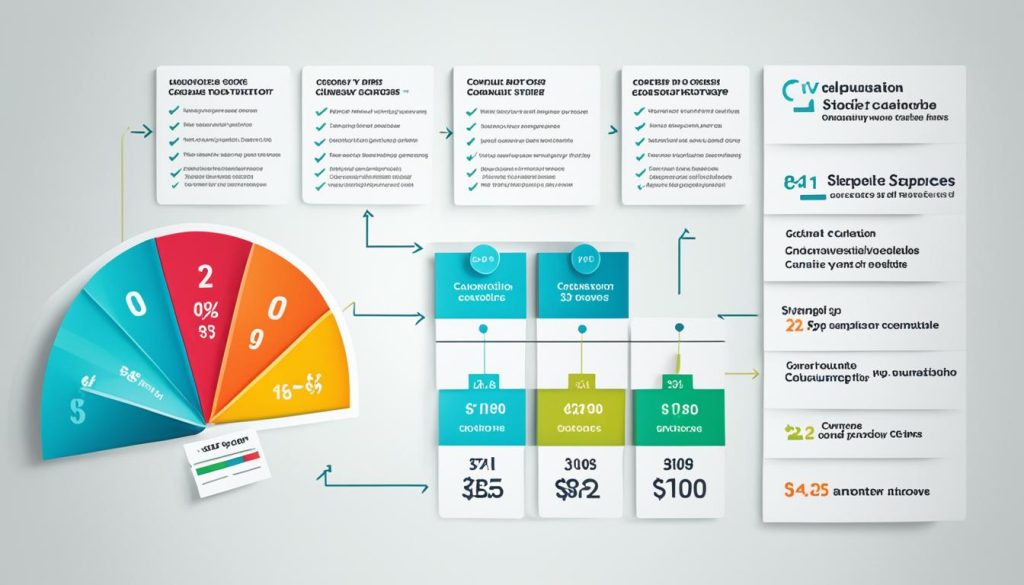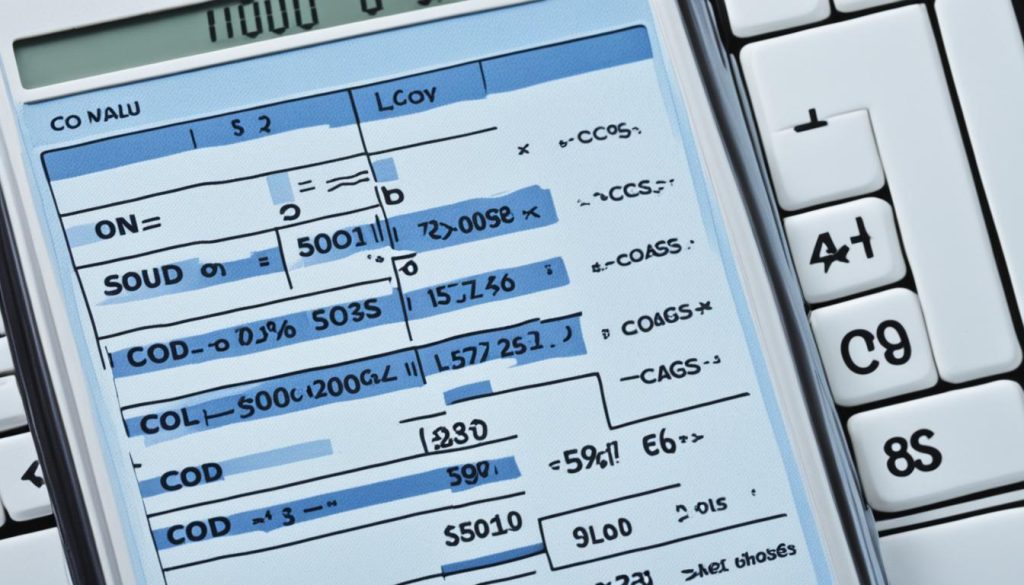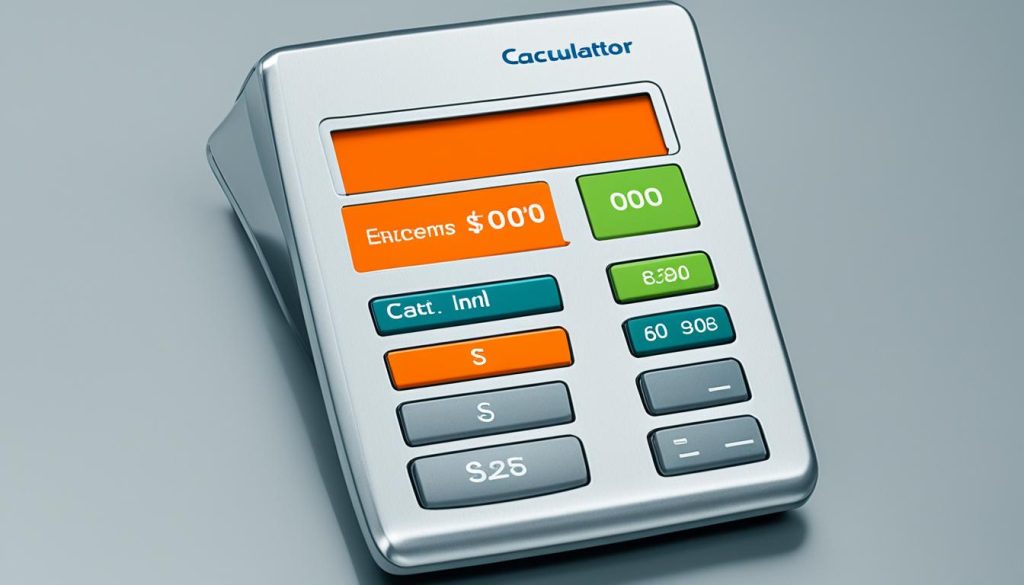Cost of sales, also referred to as cost of goods sold (COGS), is a vital metric for managing profitability in any business. It represents the direct costs associated with producing goods or services, such as materials and labor.
Calculating this figure accurately is crucial for financial analysis, enabling businesses to assess profitability, set prices, and make informed decisions.
This step-by-step guide will walk you through the formula and process for calculating cost of sales with precision. You’ll also learn best practices, tips for ensuring accuracy and efficiency, and discover common mistakes to avoid.
By mastering how to calculate Cost of Sales, you’ll be better equipped to manage your business’s financial health and improve overall profitability.
What is the Cost of Sales?
The cost of sales, often referred to as the cost of goods sold (COGS), represents the direct expenses involved in producing and delivering the goods or services that a business sells. This essential financial metric encompasses several key components, such as raw materials, labor, manufacturing overhead, and shipping costs, all of which contribute to the total production cost.
Key Components of Cost of Sales
1. Raw Materials
The cost of raw materials is a major portion of the cost of sales. These include any materials directly involved in the production process, such as steel, fabric, or electronics components, depending on the type of product being manufactured.
2. Labor
Labor costs involve wages, salaries, and benefits paid to workers directly involved in production, such as assembly line workers or machine operators. This also includes overtime pay and incentives for workers contributing to the creation of goods.
3. Manufacturing Overhead
Indirect costs, like factory rent, utilities, equipment depreciation, and maintenance, fall under manufacturing overhead. These expenses, though not directly tied to production, are essential to the overall process and are allocated to each unit produced.
4. Shipping Costs
The expenses related to packaging and delivering finished products to customers or distribution hubs also form part of the cost of sales. This includes transportation fees, freight charges, and handling costs.
By understanding and calculating the cost of sales, businesses can gauge profitability, analyze their gross margin, and assess the efficiency of their production processes. A detailed breakdown of cost components allows businesses to optimize operations, improve inventory management, and ultimately enhance financial performance

How to Calculate Cost of Sales for Business?
Calculating the cost of sales (COS), also known as cost of goods sold (COGS), is essential for any business to accurately assess its profitability. This financial metric helps determine the direct costs involved in producing or acquiring the goods that your business sells.
By calculating COS, businesses gain insights into operational expenses, allowing them to adjust pricing strategies, optimize inventory management, and improve overall profitability.
Formula for Calculating Cost of Sales
To calculate the cost of sales, you’ll need to consider three main components:
- Beginning Inventory: The value of inventory at the start of the accounting period.
- Additional Inventory Purchased: The cost of any new inventory, including raw materials or finished products purchased during the period.
- Ending Inventory: The value of remaining inventory at the end of the accounting period.
The formula for cost of sales is as follows:
Cost of Sales = Beginning Inventory + Additional Inventory Purchased – Ending Inventory
This formula allows businesses to determine the total cost associated with producing or acquiring the goods sold during a specific period.
Importance of Calculating COS
Accurate COS calculation is vital for financial analysis, as it directly affects the determination of gross profit. By subtracting COS from revenue, businesses can evaluate how efficiently they manage production, procurement, and inventory.
Additionally, proper COS calculations help companies fine-tune their pricing strategies and monitor operational expenses.
Example of COS Calculation
To better understand the process, let’s consider an example:
- Beginning Inventory: £10,000
- Additional Inventory Purchased: £5,000
- Ending Inventory: £3,000
Using the formula:
Cost of Sales = £10,000 + £5,000 – £3,000 = £12,000
In this case, the cost of sales for the period is £12,000, giving the business a clear understanding of the expenses incurred for producing or acquiring goods sold.
Benefits of Accurately Calculating COS
- Profitability Analysis: COS helps businesses understand their gross profit, a key indicator of financial health.
- Inventory Management: Monitoring inventory levels through COS ensures efficient stock management, reducing the risk of overstocking or stockouts.
- Operational Efficiency: By analyzing COS, businesses can identify areas for cost-saving and optimize their procurement and production processes.
Understanding and calculating COS is crucial for informed financial decision-making. Businesses that regularly track and evaluate their COS can better manage their expenses, maximize profitability, and improve overall efficiency.

Best Practices for Calculating Cost of Sales
To ensure accurate and reliable calculations of cost of sales, it is essential to follow best practices. These practices apply to various industries, from manufacturing companies to retail and service-based businesses.
By implementing these best practices, you can improve the accuracy and effectiveness of your cost of sales calculations.
1. Maintain Accurate and Detailed Records
Keeping comprehensive records of all relevant expenses is crucial for calculating cost of sales. Ensure that you track and collect data on costs such as raw materials, labor, manufacturing overhead, and shipping expenses.
Maintain a clear and organized system to document all financial transactions related to the production and delivery of goods or services.
2. Regularly Update Inventory Records
Accurate inventory records are vital for calculating cost of sales. Regularly update your inventory records to reflect the current stock levels. This includes accurately recording the value of beginning inventory, additional inventory purchased, and ending inventory at the end of each period.
Real-time tracking of inventory can help prevent discrepancies and ensure the accuracy of your cost of sales calculations.
3. Consistently Apply a Costing Method
Choose a consistent costing method for valuing your inventory, such as specific identification, FIFO (First-In, First-Out), or weighted average.
Applying a consistent method ensures that your cost of sales calculations are accurate and comparable over time. Consider the nature of your business and industry best practices when selecting the most appropriate costing method.
4. Review and Reconcile Financial Statements
Regularly review and reconcile your financial statements, particularly the income statement and balance sheet. This process helps identify any discrepancies and ensures that all transactions related to cost of sales are accurately recorded.
By conducting regular audits and reconciliations, you can maintain the integrity of your financial data and improve the accuracy of your cost of sales calculations.
5. Use Reliable Software or Tools
Utilize reliable accounting software or cost of sales calculators to streamline and automate your calculations. These tools can help reduce human error and save time spent on manual calculations.
Evaluate different software options available in the market and choose one that suits the specific needs of your business.
6. Seek Professional Assistance, if Necessary
If you find cost of sales calculations challenging or if your business has complex cost structures, consider consulting with a financial expert or professional accountant.
They can provide valuable insights and guidance to ensure accurate cost of sales calculations, especially for manufacturing companies or businesses with intricate production processes.
By following these best practices, you can improve the accuracy, efficiency, and reliability of your cost of sales calculations. These practices will help you make informed financial decisions, optimize profitability, and effectively manage your business’s resources.

Tips for Accuracy and Efficiency
When it comes to calculating the cost of sales, accuracy and efficiency are key. By following these tips, you can ensure that your cost of sales calculations are reliable and effective.
1. Utilize a Cost of Sales Calculator
Using a cost of sales calculator can simplify the calculation process and reduce the chances of errors. These tools provide a structured framework for inputting your financial data, automatically applying the relevant formulas, and generating accurate cost of sales figures. Make use of cost of sales calculators to save time and streamline your calculations.
2. Understand the Relationship Between Inventory and Cost of Sales
Having a clear understanding of how inventory affects the cost of sales is crucial. Recognize the significance of accurate inventory tracking and management, as errors in these areas can lead to incorrect cost of sales calculations.
Regularly reconcile your inventory records, update for any losses or damages, and ensure accurate valuation of inventory.
3. Pay Attention to the Importance of Cost of Sales
Recognizing the importance of the cost of sales in your financial analysis is essential. Cost of sales provides insights into the profitability of your business and enables you to make informed decisions regarding pricing strategies, inventory management, and overall operational efficiency.
By understanding how cost of sales impacts your financial health, you can develop strategies to improve your bottom line.
4. Consider Industry-Specific Factors
Keep in mind that different industries may have specific considerations when calculating the cost of sales. For example, manufacturing companies may need to account for direct material costs and production overheads, while retail businesses may focus on factors such as inventory turnover and sales discounts.
Service-based businesses, on the other hand, may need to factor in labor costs and other direct expenses. Tailor your cost of sales calculations to your specific industry to ensure accuracy.
5. Continuously Review and Refine Your Process
Don’t settle for a one-time calculation of the cost of sales. Continuously review and refine your process to optimize accuracy and efficiency.
Regularly assess your data inputs, formulas, and calculations to identify any areas for improvement. Implementing periodic reviews will help you maintain the integrity of your cost of sales calculations and ensure they remain accurate over time.

Conclusion
Calculating the cost of sales is crucial for determining the profitability and financial health of a business. By accurately analyzing cost of sales, businesses can make informed decisions about pricing, inventory management, and operational efficiency.
Following the proper formula and process, considering best practices, and implementing tips for accuracy and efficiency are essential for reliable calculations.
Understanding the cost of sales is particularly important for different industries, including manufacturing, retail, and service-based businesses. Each industry has unique factors that influence cost of sales, and tailoring strategies accordingly can provide valuable insights.
By mastering the calculation of cost of sales, businesses can optimize their profitability and maintain long-term success.
In summary, knowing how to calculate the cost of sales, recognizing its importance, and tailoring it to specific industries empowers businesses to make strategic decisions and maximize their financial performance. By taking these factors into account, companies can secure a competitive edge in the market.
FAQs
How do I calculate the cost of sales?
To calculate the cost of sales, you need to add the beginning inventory and additional inventory, then subtract the ending inventory. The resulting value is the cost of sales.
Why is knowing the cost of sales important?
Understanding the cost of sales is crucial for determining the profitability of a business and comparing it to the gross profit. It also provides insights into inventory management and helps evaluate the efficiency of production processes.
How can I calculate the cost of goods for my business?
To calculate the cost of goods sold (COGS), you need to consider the beginning inventory, additional inventory purchased, and ending inventory left at the end of a specific period. The formula for calculating COGS is: Beginning Inventory + Additional Inventory – Ending Inventory = COGS.
What are the best practices for calculating the cost of sales?
The best practices for calculating the cost of sales include keeping accurate records of inventory, expenses, and sales, conducting regular inventory audits, using a consistent accounting method, and consulting with a financial professional if needed.
Do you have any tips for improving accuracy and efficiency when calculating the cost of sales?
Yes, to improve accuracy and efficiency, consider implementing automated accounting systems, maintaining up-to-date records, using cost tracking software, regularly reviewing and analyzing cost data, and seeking professional advice when necessary.





